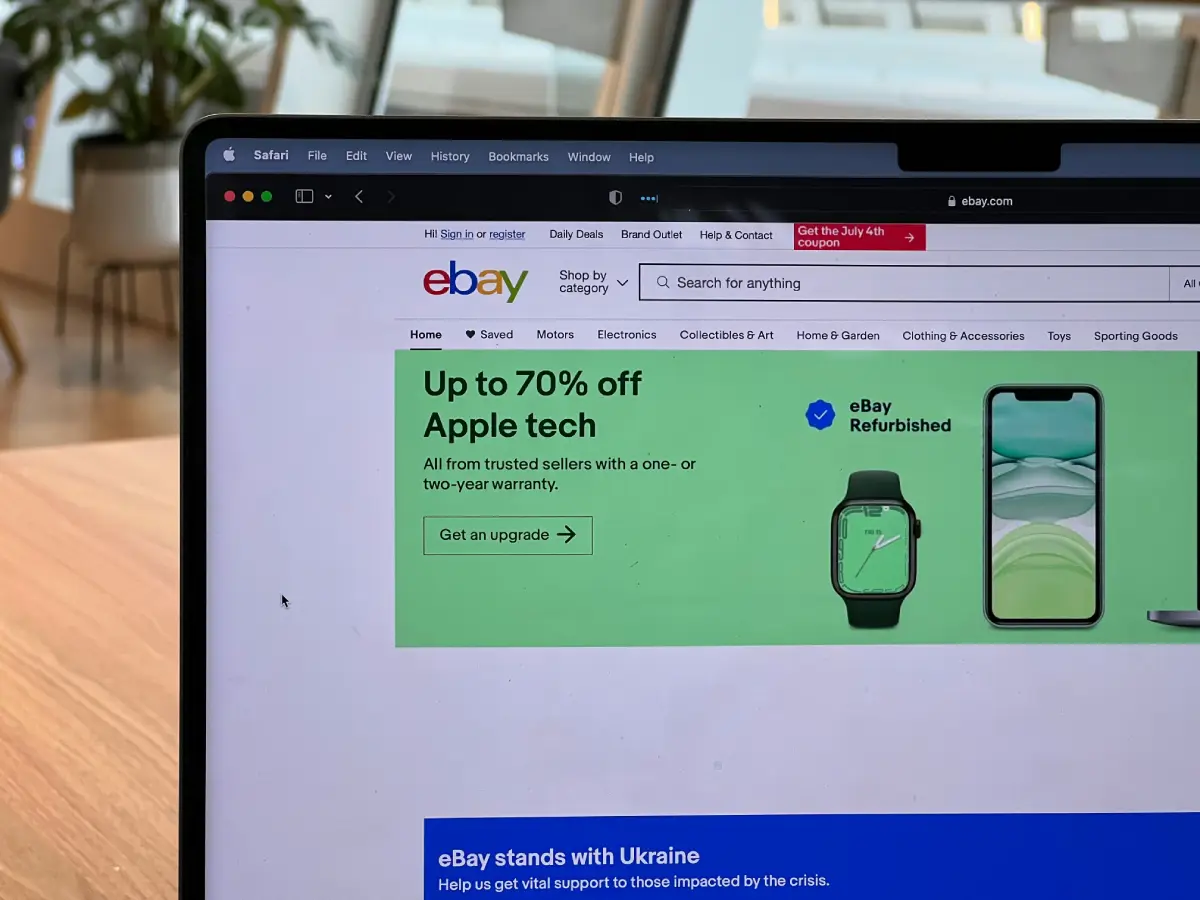Any entrepreneur knows that when it comes to startup costs, one of the greatest expenses is that of software development - especially for those who want to start a SaaS company.
If your dream is to create a thriving SaaS business that has the potential to attract top-quality investors, the best method is to bootstrap.
In this guide, we will go over what bootstrapping your SaaS means, along with an effective 7-step strategy to do so effectively.
What Does Bootstrapping a SaaS Mean?
Bootstrapping in relation to startups simply means self-funding the business for as long as possible, ideally to a point of profitability and moderate revenue. You will either need to be a developer yourself or you need to partner with a technical cofounder who is happy with an equity-based partnership at the start of your business relationship.
Why Should I Bootstrap My SaaS Startup?
Savvy entrepreneurs know that bootstrapping their startup is the preferred method if they want long-term success and a sustainable business model.
Bootstrapping your SaaS provides a number of benefits, which include the following:
- Cost-effective:
Bootstrapping by nature uses strategies that require minimal investment, so your startup will take little more investment than your time. - Preserve Equity:
When starting a bootstrapped company, you won’t be doling out equity to investors who may not be involved at all in the operations of the business. Equity will be owned only by the founder and initial partners or cofounders, which allows for better profitability and negotiating power if approaching investors in the future. - Attractive to Investors:
Investors love to see scrappiness and respect for money from a founder–these traits are inherent to those that successfully bootstrap, so if you bootstrap a company to a respectable level of revenue and profitability, you will likely have investors coming to you rather than the other way around. - Gain Valuable Marketing and Business Development Skills
When you successfully bootstrap your SaaS startup, along the way you will discover marketing strategies and business development skills that are learned best through experience and actually building your business. These strategies include content marketing and customer nurturing, and you can continue to use them to scale your business without needing to hire a bloated team.
Bootstrapping your SaaS effectively requires a good business model, which will vary based on your background, target market, and industry.
💡Hot Tip: For an extensive guide about choosing the best model for bootstrapping your SaaS, check out our article here.
Examples of Highly Successful Bootstrapped Companies
Many companies that end up being valued at hundreds of millions (or even billions) of dollars start off as a bootstrapped company.
This is partly because when the founder bootstraps, they are able to retain a meaningful chunk of equity, even after going through multiple investment rounds.
Here are examples of companies that have bootstrapped themselves to high levels of success:
Tesla
While it’s a household name today, many people don’t know how long of a process and how much of a risk Elon Musk took on by founding Tesla nearly two decades ago.
After cashing out nearly $200 million when PayPal, which Musk co-founded, was sold to eBay, he could have settled into a life of leisure and early retirement. Instead, the South African entrepreneur decided to put it all on the line to found Tesla, which he personally funded and bootstrapped. Creating a motor company is not at all cheap, so he used nearly all of his PayPal earnings. Today, the company has a market cap of over $600 Billion, with the momentum to join the likes of Amazon and Apple as a trillion-dollar company.

Meta (Facebook)
Many are familiar with the story of Mark Zuckerberg creating Facebook, now Meta, in his Harvard dorm room, where he eventually dropped out to pursue the startup full-time.
One of the reasons he was able to accumulate such a massive net worth today is that he bootstrapped his company early on, only taking on investor money when he reached a critical mass of users that gave him leverage to retain sizable equity.
Zuckerberg utilized scrappy strategies like word-of-mouth marketing and initial exclusivity to give his company its initial traction and had all of the coding manpower he needed with himself and his founding team.

eBay
While many use the platform today as it is a household name, few know the origin story of eBay and how it came to be what it is now. Founded by French-born, Iranian American Pierre Omidyar, eBay started as a website called Auctionweb in 1995, and it made its very first sale that year.
In 1996-1997, the platform was one of the few real companies with a growing base of users during the dotcom boom, and its revenue reached over $7 million just halfway through its second year, and, in true bootstrapping fashion, it was only at this point that the first employee was hired.
The beanie baby craze helped to establish the company which had changed its name to eBay as their revenue broke into the hundreds of millions of dollars.
While Omidyar is still relatively unknown, he reached billionaire status just a few short years after founding his company in 1998 when eBay went public.

Gymshark
One of the fastest-growing merchandise companies is Gymshark, which became a billion-dollar company in 2020, less than 10 years after it was founded. It has an inspiring bootstrapped story from its UK-based founder Ben Francis.
A fitness junkie and entrepreneur, Francis started Gymshark by dropshipping supplements out of his bedroom at 19 years old. He used the initial profits from supplements to fund the development of merchandise, all the while delivering pizza so as not to take profits from the business to live on.
The brand heavily utilized cost-effective influencer marketing during its peak effectiveness on Instagram, which skyrocketed its growth, and the business was so profitable that it did not need any outside funding even up to the point it hit a billion-dollar valuation.

7 Steps to Bootstrap Your SaaS Startup
If you’re inspired now to start a SaaS company and bootstrap it to success, be sure to incorporate these seven strategies:
Step 1: Identify Your Product Market & Fit
The first step to bootstrapping your SaaS is to make sure the project is worth pursuing at all, which can be done by identifying your product market and its fit, which is often referred to simply as product market fit. To do this, you can run surveys or post on forums like Reddit to assess demand, and be sure to see if there is current competition for your idea. Many times, competition is a good thing as it proves demand, and if you believe you can make a better product, you should go for it and build your SaaS.
Step 2: Create your Content Marketing Strategy
Executing a SaaS marketing plan can be expensive, particularly for companies that choose to invest money into advertisements for their product. In order to bootstrap, you will want to be cost-effective in your marketing. The best way to go about this is to utilize content marketing.
Content marketing takes advantage of the reach that platforms like Google, Instagram, and TikTok offer. Your investment will be in the form of pushing out content, which you can do yourself for free. Depending on the type of product you’re selling and your target audience, your platform, and type of content will vary.
Some companies thrive with educational blog posts that rank on Google, and others will do well by posting graphics or videos on social media. Test small and choose a platform that is working to continue your content marketing until it generates profits.
Step 3: Use Promotional Incentives
Competition is inevitable, so that means you may be targeting potential customers who are already current users of an existing SaaS. In order to get them to switch sides, you need a compelling offer, which means using a promotional incentive.
One of the most common ways to do this is to offer a free product in the form of a free trial. In the beginning stages, don’t be afraid to make your trial longer than the competition–perhaps offer a full month free instead of 7 or 14 days. Even if the churn rate in the beginning is high, you will get priceless customer feedback that will allow you to improve your product and eventually cut down your trial period and raise prices to match the competition.
Step 4: Launch in a Community
Once you’ve developed an MVP, you will want to launch your product, ideally to an email list that you’ve gathered through content marketing, and on an existing community. Some people utilize private groups on Facebook or Discord or forums like Reddit to find communities to launch their product, however, doing this requires research and often moderator approval.
If you want to launch in a thriving community of loyal customers who are always looking out for cutting-edge offers on the marketplace, including useful SaaS products, consider launching on Whop.
You will be able to reach a large base of potential customers immediately when you are listed on Whop’s marketplace, so if you are confident in the quality of your product and its branding, you can be potentially be discovered and gain new customers organically.
Step 5: Gather Customer Feedback
One of the most crucial steps to bootstrapping your product to a successful level is to gather customer feedback, and most importantly, listen to it - especially if it is repeating across different customers.
Make it easy for customers to send feedback, perhaps in the form of an automated email follow-up for anyone that purchased. Ask not only to leave a review, but for direct feedback that they can privately message. While it’s important to listen to feedback and adjust your product accordingly, the customer is not always right, so be sure to use your judgment to discern whether or not the feedback is worth actually making changes or if a customer is being unreasonable and wanting improvements that are either unrealistic or that are not broadly attractive.
Step 6: Improve Your Product
Now that you’ve gathered a sufficient amount of valuable customer feedback–which, by the way, is an ongoing process that never ends–you need to make improvements to your products as requested.
Although you may reach a point where the product is at a good enough level to not need improvement for some time, don’t expect your product to be at this level in the beginning, so be ready to execute changes and improvements.
Be sure to utilize efficient working methods such as Scrum or Agile in order to carry out changes as speed matters in customer retention and attraction.
Once you’ve made your changes, don’t forget to announce them and recruit new customers or win back lost ones with the better version.
Step 7: Scale with Little to No Spend
Finally, in true bootstrapping fashion, you need to be able to continue to scale your company with little to no spending.
You may be tempted to raise outside investment to scale quickly, but patience is key here, and trust the process of healthy organic growth that is inevitable if your SaaS product is liked and actively used by your customer base.
While much of the scaling–for example, posting content for marketing across platforms–can be free, don’t be afraid to spend some money if you have it. Consider reinvesting some profits into advertisements or sponsorships if you are already profitable and have good momentum.
Only once you get to the point of scale that it makes sense to raise capital in order to compete with others that are aggressively fighting for a piece of the pie in a large market should you approach investors, and if your business is good enough and has been bootstrapped to a good level, they will probably approach you.
More Tips for Bootstrapping Your SaaS
While the seven-step process that we previously laid out is an excellent process to follow to effectively bootstrap your SaaS, you will likely incorporate a variety of other strategies. Here are a few that you can utilize:
Search for Early Adopters
Getting your first users is often the hardest part of starting a business, because, without them, you have no revenue, which apart from being money in the bank is an incentive to continue to develop a high-quality product.
However, if you know your market well enough, you’ll know how to attract early adopters, which will happen naturally if your branding and mission are pure and authentic, and you find them in the right place.
Some people are always on the lookout for new software, and you can find them on sites like ProductHunt and AppSumo which you can use to launch your product and gain its first customers.
Whop also has a growing base of customers who are on the lookout for the newest products, so launching on the marketplace can be a good source of early adopters as well.
Cut Down Hiring Costs
When building a SaaS company, it’s likely that you have skills as a developer, which will save you costs right off the bat. However, it is time-consuming and potentially distracting to build everything on your own, especially if your product has unique functionality or extensive features.
Rather than staffing a full-time developer, you can efficiently hire developers from Fiverr or Upwork on a per-project basis. You can do the same for any marketing or business development help. Consider using Virtual Assistants for administrative tasks that can be time consuming, these tend to be much cheaper than any traditional employees.
Use Free Tools and Resources
While free tools sometimes fall into the category of competition in the SaaS world, you can also utilize them to keep your budget bootstrap-friendly. Productivity and workflow staples like Github, Slack, Hubspot, and the suite of Google’s free applications can all be utilized for free to help with your SaaS. ChatGPT can also help with many parts of your process, including writing code within a certain capacity.
In terms of educational resources, which might include development, business planning, and execution advice, a plethora of free and incredibly helpful content exists with a simple Google or platform search.
Focus on SEO
Especially for SaaS, content marketing in the form of educational text will be attractive to potential customers, so positioning yourself as a topical authority by having a blog that gets traffic from SEO will allow you to create a free organic marketing channel that is preferred by some of the best SaaS companies.
Some quick tips on SEO for your SaaS business include a user-friendly reading format and writing comparison posts for competing software in your niche.

Bootstrap Your SaaS Business With Whop
For SaaS entrepreneurs that want to join the next generation of internet entrepreneurs scaling digital product businesses to massive levels, consider bootstrapping your SaaS with Whop.
Not only is it free and fast to sign up and reach a massive marketplace of potential customers immediately upon listing your business, but there are a number of other benefits, which include:
- Be listed amongst premier and widely recognized digital products businesses
- Easily utilize and integrate a powerful API and analytics dashboard
- 24/7 Customer support with knowledgable agents who will answer any question throughout the process, including video call support
- Affiliate program that you can easily utilize to recruit affiliates that will help market your SaaS
- Ability to integrate email marketing automation
Sign up with Whop today!
Ready to cash in with all of our other sellers? Here’s how to sign up and get your SaaS business started on Whop today:
- Pick your business name and branding. We even offer free help with graphic design, just ask our customer service how to access this!
- Head over to Whop.com/sell
- Choose the business category and follow the steps
- If applicable, review our software and API documentation and carry out any necessary steps for integration or functionality
- Upload your product
- When you’re ready, list your store as live and you’ll be out there for anyone to purchase!
We know how intimidating and confusing the process can be for launching your SaaS business, so our biggest goal was to make for a seamless sign-up including support for effortless integrations. If you have any questions, feel free to ask away, and for those with a product, now is the best time to launch.
👉Sign up with Whop today to bootstrap your SaaS!



![The Best SaaS Subscription Management Software [2024]](/blog/content/images/size/w600/2023/11/SaaS-management.webp)

